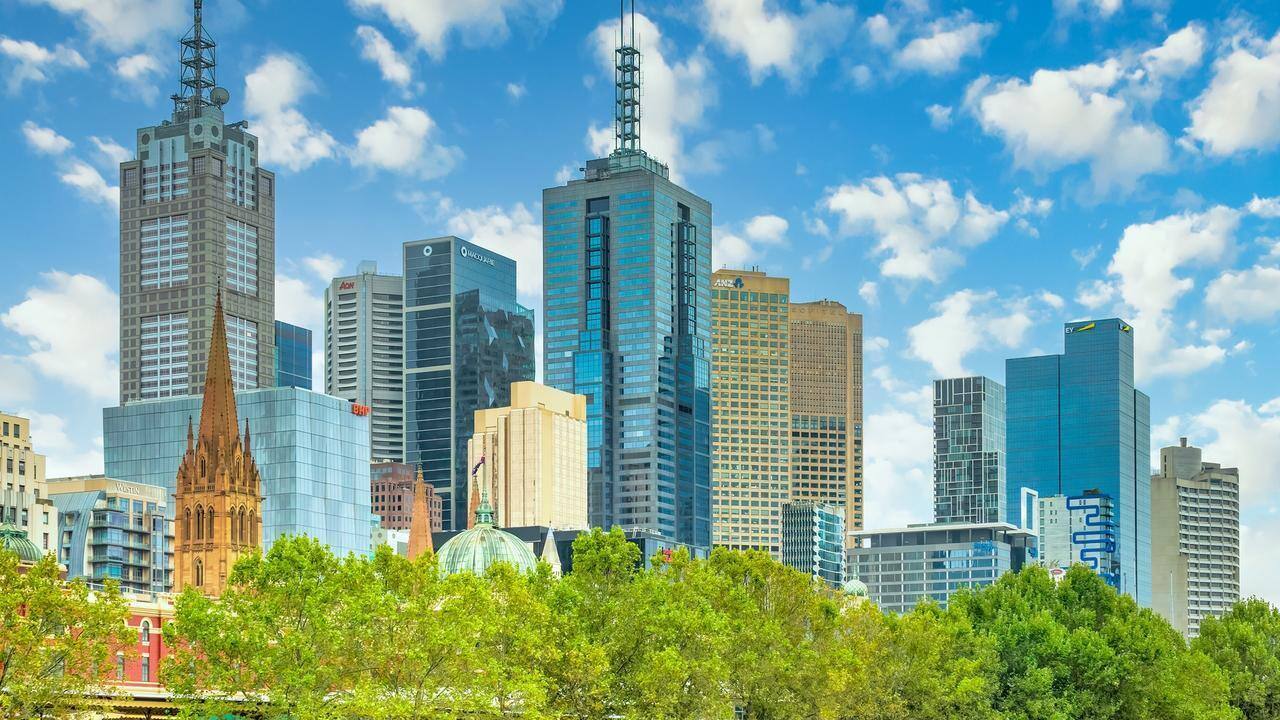Features > Property News & Insights > Housing Trends
Sydney and Melbourne's exodus by younger generations could have grave consequences
.png)
Image from Domain
KEY POINTS
- Young people are leaving inner-city suburbs in Sydney and Melbourne behind in search of affordable housing
- The populations of Inner city suburbs are shrinking and ageing
- Widespread economic and social implications could arise from this shift in population demographics
Australia’s two largest capital cities, Sydney and Melbourne, have been experiencing a mass exodus, with young people moving to outer suburbs and regional Australia in pursuit of affordable housing.
It’s becoming increasingly difficult for young people to own a home in the inner suburbs of Sydney and Melbourne, with Sydney’s median house price currently sitting at just over $1.47 million.
A new KPMG report sheds light on the serious ramifications that could eventuate from this mass exodus of younger Australians from these sought-after but shrinking suburbs.
In Sydney, Marrickville’s population shrunk by 1.9% or 1,064 people between 2019-23.
943 of those who left were aged under 20.
Leichhardt experienced an overall reduction in population of 2.7%, losing 2,127 of its population aged under 64, and gaining 511 residents of retirement age.
The trend continued closer to the coast, with the Eastern Suburbs (South) losing 2.4% of its population, or 3,448 people.
A whopping 3,656 people aged under 64 left the area, while the area gained 208 residents aged over 65.
Other inner-urban areas with declining populations include Melbourne’s Boroondara, which includes the up-market suburbs of Kew, Camberwell and Hawthorn and Stonnington–West (up to -3.3%), which includes bustling South Yarra, Prahran and Windsor.
The KPMG report showed that most suburbs experiencing significant reductions in population were losing young to middle-aged people, aged under 64 and of ‘working age’, but gaining elderly residents, aged over 65.
On the flip side, Brisbane and Perth have experienced an influx of younger residents, with Brisbane’s inner-city (north) population growing by 8.5% and the Stirling area in Perth growing by 7.5%.
The bulk of this growth comes in the 20-64 age group.
Economic implications
Inner city suburbs of Sydney and Melbourne are experiencing huge shifts in their social fabrics that come with real consequences for productivity.
Populations are ageing, and the number of working-age residents is decreasing.
"Despite being areas with exceptional access to jobs and excellent local infrastructure, inner city suburbs of Melbourne and Sydney are seeing a decline in population simply because young people can’t afford to live there,” says KPMG Urban Economist Terry Rawnsley.
"It's no surprise that local businesses in some of these locations would struggle to attract customers and workers.”
A departure of 2.5% of your working-age population could feel like a recession.”
If local businesses struggle to find employees, or if they experience a demand reduction, there could be further implications on their viability, putting a damper on some of the vibrancy that makes these suburbs so desirable in the first place.
Outer suburbs are also facing strain.
An influx of residents from inner urban areas is leading to increased pressure on infrastructure, while well-developed facilities closer to CBDs are underutilised.
“As workers move farther from city centres, the strain on transport and local infrastructure in suburban areas intensifies, raising implications for urban planning,” says KPMG’s Terry Rawnsley.
Urban planning challenges
Outer suburban areas that are relatively new tend to lack infrastructure, including transport, schools, and essential services.
They’re also further away from work opportunities, which can be problematic for young people establishing careers and families.
In general, these areas are less connected than inner-city suburbs, and the existing infrastructure would likely struggle to service a sudden population surge.
"Families are increasingly moving to greenfield areas, where although residential land is more available, there are significant challenges in accessing essential services and employment opportunities,” Mr Rawnsley says.
The cracks are starting to show
Australia’s housing crisis has placed a spotlight on city planning.
Sydney, for instance, is said to have a ‘missing middle’, lacking medium-density housing such as low-rise apartments, townhouses, and duplexes.
Experts have blamed poor planning and zoning barriers.
The Minns state government announced changes last year, in a bid to reduce some of these barriers to development, and to encourage the building of more medium and high density housing.
“Sydney is one of the least dense cities in the world, but fewer than half of councils allow for low-rise and mid-rise residential buildings in areas zoned for such homes,” says Paul Scully, the New South Wales Minister for Planning and Public Spaces.
“We’re confronting a housing crisis, so we need to change the way we plan for more housing; we can’t keep building out, we need to create capacity for more infill, with more diverse types of homes.”
“Diversity of housing allows people to stay in their communities and neighbourhoods through different stages of their life.”
Earlier this year, Premier Chris Minns also announced ambitions to ‘rebalance’ housing across Greater Sydney, the Illawarra, the Hunter and Central Coast, and regional NSW.
Working towards building the state’s share of the National Housing Accord targets, Mr Minns announced that 82% of new homes in New South Wales would be built in infill areas, with only 18% targeted to greenfield areas.
“We’re losing too many young people, people who make the city vibrant, essential workers, and young families because they can’t afford a place to live in NSW.”
“This has to change,” Mr Minns says
It’s clear state governments recognise the problem.
However, it’s unclear whether planning changes alone will be enough to make a meaningful difference to once thriving inner-city areas who’ve lost scores of younger residents.
Stay Up to Date
with the Latest Australian Property News, Insights & Education.




.png?width=292&height=292&name=Copy%20Link%20(1).png)
 SIGN UP FOR FREE NEWSLETTER
SIGN UP FOR FREE NEWSLETTER








.jpg?width=1920&height=1080&name=Warning%2c%20You%20Might%20Be%20Facing%20Higher%20Taxes%20Soon%20(1).jpg)





.png?width=1920&height=1080&name=Rate%20Drops%20Signal%20BIGGEST%20Property%20Boom%20in%20DECADES%20(1).png)

.jpg?width=1920&height=1080&name=Labor%20vs%20Liberal%20These%20Housing%20Policies%20Could%20Change%20the%20Property%20Market%20Forever%20(1).jpg)
.jpg?width=1920&height=1080&name=QLD%20Slashes%20Stamp%20Duty%20Big%20News%20for%20Investors%20%26%20Home%20Buyers%20(1).jpg)
.jpg?width=1920&height=1080&name=Trump%20Just%20Slapped%20Tariffs%20%E2%80%93%20Here%E2%80%99s%20What%20It%20Means%20for%20Australia%20(1).jpg)
.jpg?width=1920&height=1080&name=Federal%20Budget%202025%20More%20Debt%2c%20No%20Housing%20%E2%80%93%20Here%E2%80%99s%20What%20You%20Need%20to%20Know%20(1).jpg)
.jpg?width=1920&height=1080&name=Australias%20Housing%20Crisis%20is%20about%20to%20get%20MUCH%20Worse%20(New%20Data%20Warns).jpg)
%20(1).jpg?width=1920&height=1080&name=Australias%20RENTAL%20CRISIS%20Hits%20ROCK%20BOTTOM!%20(2025%20Update)%20(1).jpg)
%20(1).png?width=1920&height=1080&name=Is%20Adelaide%20Still%20a%20Good%20Property%20Investment%20(2025%20UPDATE)%20(1).png)
.jpg?width=1920&height=1080&name=RBA%20Shocks%20with%20Rate%20Cuts!%20What%E2%80%99s%20Next%20for%20Property%20Investors%20(1).jpg)
%20(1).jpg?width=1920&height=1080&name=I%20Predict%20The%20Feb%20Rate%20Cut%20(My%20Price%20Growth%20Prediction)%20(1).jpg)
.png?width=1920&height=1080&name=Why%20Property%20Prices%20Will%20Rise%20in%202025%20Market%20Predictions%20(1).png)
.jpg?width=1920&height=1080&name=Why%20Investors%20Are%20Choosing%20Apartments%20Over%20Houses%202%20(1).jpg)
.jpg?width=1920&height=1080&name=Why%20Rate%20Cuts%20Will%20Trigger%20A%20Property%20Boom%20(1).jpg)
.jpg?width=1920&height=1080&name=Retire%20On%202Million%20With%20One%20Property%20(Using%20SMSF).jpg)
.jpg?width=1920&height=1080&name=4%20Reasons%20Why%20You%20Should%20Invest%20in%20Melbourne%20Now%20(1).jpg)
%20(1).jpg?width=1920&height=1080&name=Old%20Property%20vs%20New%20Property%20(Facts%20and%20Figures%20Revealed)%20(1).jpg)
%20(1).jpg?width=1920&height=1080&name=Will%20The%20New%20QLD%20Govt%20Create%20a%20Property%20Boom%20or%20Bust%20(My%20Prediction)%20(1).jpg)
%20Scott%20Kuru%20(1).jpg?width=1920&height=1080&name=Inflation%20Hits%20Three-Year%20Low%20(Will%20RBA%20Cut%20Rates%20Soon)%20Scott%20Kuru%20(1).jpg)
.jpg?width=1920&height=1080&name=How%20to%20Buy%20Investment%20Property%20Through%20SMSF_%20The%20Ultimate%20Guide%20(1).jpg)
.jpg?width=1920&height=1080&name=Victoria%20Slashes%20Stamp%20Duty%20Melbourne%20Set%20to%20Boom%20Scott%20Kuru%20(1).jpg)
.png?width=1571&height=861&name=Are%20Foreign%20Buyers%20Really%20Driving%20Up%20Australian%20Property%20Prices%20(1).png)
.jpg?width=1920&height=1080&name=The%20Single%20Factor%20That%20Predicts%20Property%20Growth%20Regions%20(1).jpg)
%20Scott%20Kuru%20(1).jpg?width=1920&height=1080&name=My%20Prediction%20On%20Rates%20%26%20Negative%20Gearing%20(Market%20Crash)%20Scott%20Kuru%20(1).jpg)

-1.png?width=1920&height=1080&name=Major%20Banks%20Cut%20Rates%20Will%20RBA%20Follow%20Suit%20(Sept%20Rate%20Update)-1.png)
%20Scott%20Kuru-1.png?width=1920&height=1080&name=Rate%20Cut%20Coming%20What%20New%20Zealands%20Move%20Means%20for%20Australia%20(Sept%20Prediction)%20Scott%20Kuru-1.png)
%20(1).jpg?width=1920&height=1080&name=Buy%20when%20the%20interest%20rates%20are%20high!%20(Why%20you%20must%20buy%20now!)%20(1).jpg)
.jpg?width=1920&height=1080&name=Carms_Revised%20Taxes%20Due%20Aug%209%20YT%20Thumbnail02%20(1).jpg)
.jpg?width=1920&height=1080&name=Carms_Too%20Little%20Too%20Late%20Aug%207%20YT%20Thumbnail01%20(1).jpg)









.jpg?width=1920&height=1080&name=Carms_Rate%20Drop%20In%20July%20Jun%2010%20YT%20Thumbnail02%20(1).jpg)
.jpg?width=1920&height=1080&name=Carms_Own%20a%20Property%20V6%20Jun%205_YT%20Thumbnail%20(1).jpg)









.png?width=1920&height=1080&name=Artboard%201%20(3).png)






.jpg?width=1920&height=1080&name=YT%20thumbnail%20%20(1).jpg)

